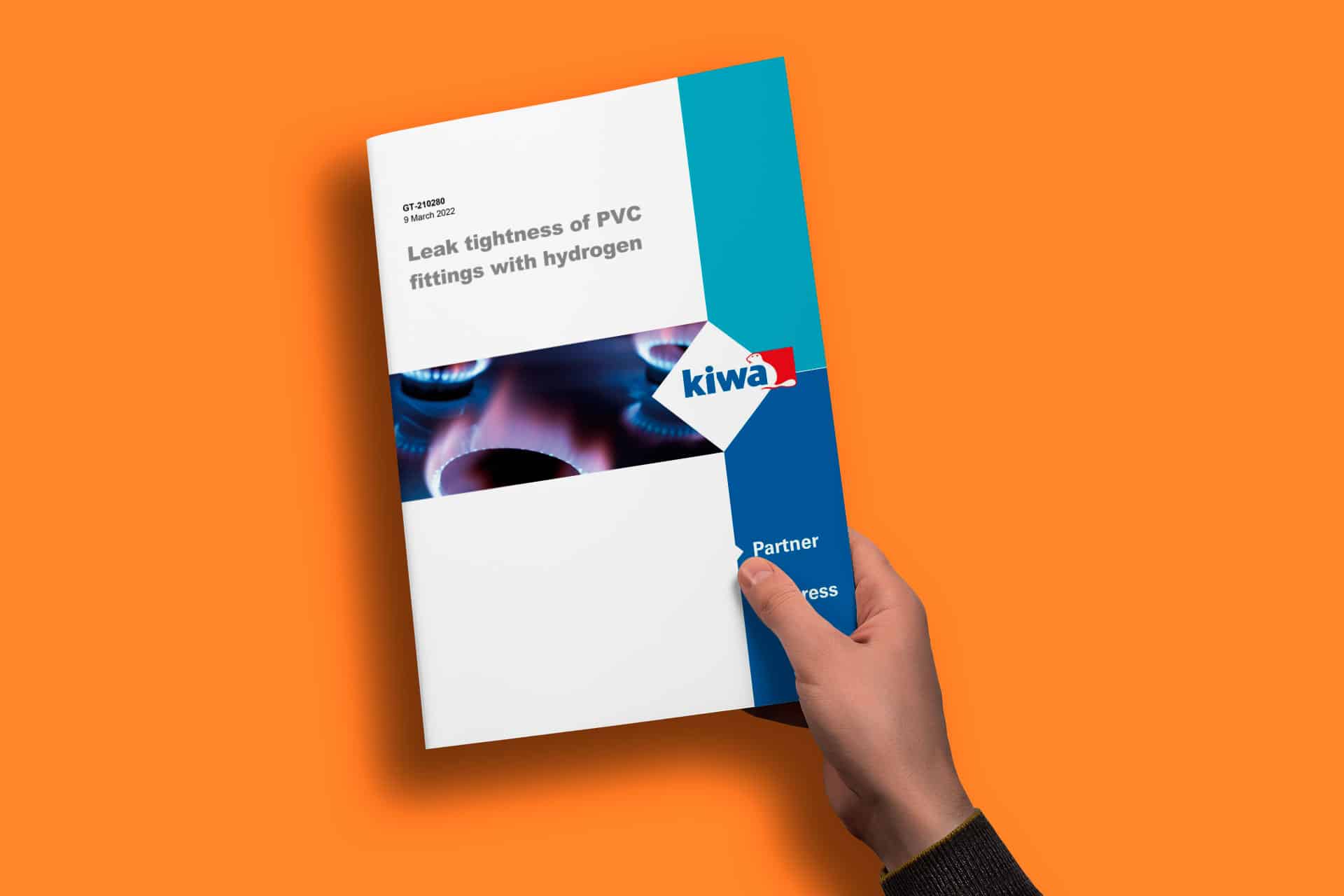PVC has long been a favoured material for natural gas pipelines. In the Netherlands alone more than 80,000 km of PVC pipes are installed, making up nearly 65% of the total grid. The first PVC pipes for natural gas were put in the ground in the 1960s. These pipes were made from unplasticised PVC, also known as PVC-U.
Since the 1970s, only High Impact PVC (PVC-HI) have been used. The PVC-HI grade is obtained by adding an impact modifier to PVC-U that increases the resistance of the pipes to external blows. PVC-HI pipes are made specifically for underground distribution of natural gas, with a maximum operating pressure of 200 mbar.
50 years of service – fit for 50 more years
How do gas pipes perform after 50 or more years of service? Do they need to replaced in the near future? According to research presented at the 1st PVC4Pipes Conference, the pipes show minimal degradation after half a century and are expected to last for decades. In fact, the main reason for failure is damage by third parties.
Safe distribution of clean hydrogen through the existing PVC natural gas grid
Clean hydrogen made from renewable energy can be used as feedstock, fuel or energy carrier and storage, and has many possible applications across industry, transport, power and buildings sectors. According to the European Commission's Hydrogen Strategy the existing natural gas grid can possibly be used for hydrogen distribution.
As much of the natural gas infrastructure is made up of PVC pipes, PVC4Pipes is proactively contributing to expand the knowledge base developed by Netbeheer Nederland and Kiwa these last two decades.
50-year old PVC pipes and fittings fit for hydrogen
Building on a report from 2018 by Kiwa Technology, which showed that PVC pipes were well suited to distribution of hydrogen, PVC4Pipes commissioned Kiwa and Netbeheer Nederland to conduct a study to fill some of the knowledge gaps. In the new study, excavated pipes and joints from the Dutch gas grid were tested for leak tightness and angular deflection.
First, pipes and joints were exposed to a time-accelerated test of hydrogen exposure equivalent to more than 50 years of actual service. Second, the samples were tested for their maximum angle of deflection to find out when leakage would occur.
The study concludes that both PVC-U and PVC-HI pipelines show negligible permeation of hydrogen through pipe wall and rubber sealed socket couplers and good behaviour of angular deflection. As much of the grid has passed or is nearing its 50th anniversary, and the old joints performed as well new joints even after the accelerated ageing, it can be assumed that the Dutch natural gas grid can distribute hydrogen safely for many decades.
PVC-O pipes suitable for hydrogen
PVC4Pipes recently commissioned Kiwa Technology to conduct a detailed study aimed at enhancing the understanding of molecularly oriented PVC (PVC-O) pipes in hydrogen distribution networks. PVC-O is the result of a production process that turns the amorphous structure of unplasticised PVC (PVC-U) into a layered structure. The material is finding increasing usage for pressure pipes for drinking water, as well as buried non-potable applications such as irrigation and sewer pumping mains.
The study, Hydrogen Permeation of PVC-O Pipe and Coupler at Different Temperatures, focuses on the performance of PVC-O compared to traditional materials such as PVC-U and impact-modified PVC (PVC-HI), with a special emphasis on the impact of temperature variations.
The findings indicate that PVC-O pipes and M-110 couplers perform comparably or even better than traditional PVC materials, particularly under cooler conditions. The research measured permeability coefficients and permeation rates at temperatures of approximately 8°C and 23°C, and pressures of 200 mbar(g). It was noted that resistance to hydrogen permeation increases significantly at lower temperatures.
Clean hydrogen a pillar in Europe's green energy transition
To meet the European Commission's ambitious climate plan for net-zero in 2050, a quick transition to green energy is needed. According to the EU Hydrogen Strategy, clean hydrogen produced from renewable energy source such as wind and solar is a pillar in the transition. Green electricity will to a large extent decarbonise the EU energy consumption by 2050, yet not all.
Hydrogen can replace fossil fuel in carbon intensive industrial processes, such as in the steel or chemical sectors. It can also help to decarbonise the transport sector by providing fuel for trucks, ships and other heavy vehicles. For the EU Hydrogen Strategy to become true, the European Commission mentions the existing natural gas infrastructure as a way to distribute hydrogen from plant to consumer.




